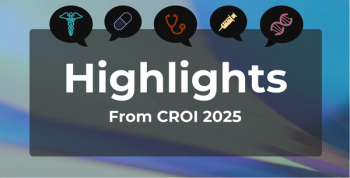
Future of Vitiligo Treatment: Emerging Therapies, Impact on Quality of Life
Key Takeaways
- Vitiligo significantly impacts quality of life, with psychosocial challenges more pronounced in individuals with darker skin tones.
- JAK inhibitors, including ruxolitinib, tofacitinib, and baricitinib, show promise in vitiligo treatment, with ruxolitinib being FDA-approved.
Patients with vitiligo experience impacts on quality of life, emerging therapies offer promising prospects for more targeted and effective treatments, though further research is needed to confirm their safety, efficacy, and optimal use.
Various emerging therapies provide hope for patients with vitiligo, a complex
Vitiligo, a complex dermatologic disorder, significantly impacts patients' quality of life due to the destruction of melanocytes, leading to distinct white skin patches. Patients often face psychosocial challenges, including self-consciousness, stress, and low self-esteem, with some reports that found patients who became self-conscious when looking in the mirror.2 A more pronounced impact was identified among those with darker skin tones who may also experience higher levels of discrimination, according to research presented at the European Academy of Dermatology and Venereology 2022 Congress.3
Current vitiligo treatments, primarily immunosuppressants, aim to suppress autoimmune damage and stimulate melanin synthesis.1
Janus kinase (JAK) is crucial for cell signaling, especially in T cell differentiation and immune regulation, by activating the signal transducer and activator of transcription (STAT) pathway. Upregulated JAK1 and JAK3 are implicated in vitiligo pathogenesis, as key cytokines signal via JAK receptors.
Since July 2022,
Tofacitinib, an oral JAK1/JAK3 inhibitor with some JAK2/TYK2 inhibition, treats moderate to severe rheumatoid arthritis. It reduces T cell infiltration and chemokine expression in skin lesions, implying phototherapy may aid melanocyte regeneration. Due to FDA warnings linking oral tofacitinib to increased cardiovascular risk, topical formulations are preferred.
Switching from tofacitinib to baricitinib resulted in complete repigmentation of the forearm and hands. As a selective JAK1 and JAK2 inhibitor, baricitinib shows promise for vitiligo treatment, with a safety profile comparable to its efficacy in atopic dermatitis and alopecia areata. One analysis noted greater clinical and quality of life improvements with baricitinib and similar adverse events.
Upadacitinib, a common treatment for rheumatic diseases and atopic dermatitis, shows promise for vitiligo. One study noted significant improvement in Dermatology Life Quality Index scores and repigmentation, particularly on facial lesions.
Ritlecitinib, recently approved in the US and Japan for severe alopecia areata due to its similar pathogenesis to vitiligo, shows promise for treating immune-mediated diseases like hepatocellular carcinoma. It inhibits IL-2 and IL-15 signaling while reducing cytolytic functions. Other JAK inhibitors like efinetinib, povorcitinib, and cerdulatinib also show potential for vitiligo but require further research.
Simvastatin, a STAT inhibitor, shows promise as an immunomodulator in vitiligo, potentially preventing metabolic complications. While oral simvastatin has shown some repigmentation in patients with hyperlipidemia, the high doses needed for systemic use in vitiligo may pose risks. This highlights the need for alternative strategies to maximize benefits and minimize risks, especially given the strong link between oxidative stress and vitiligo progression.
IFN-α and TNF-α are key cytokines. IFN-α is crucial in inflammatory, infectious, and autoimmune diseases. TNF-α, secreted mainly by macrophages and monocytes, contributes to inflammation, apoptosis, and immune system development.
In vitiligo, reduced cytotoxic T-lymphocyte–associated protein 4 levels (both soluble and full-length messenger ribonucleic acid) in regulatory T cells impair their ability to suppress autoreactive CD8+ T cells.
Autophagy promotion shows promise for vitiligo treatment. A clinical trial is currently evaluating rapamycin's efficacy and tolerability for non-segmental vitiligo. Additionally, metformin, by promoting mitochondrial respiration and oxidation in anti-inflammatory cells, suggests a multifaceted potential as a novel therapeutic addition for vitiligo.
An α-melanocyte-stimulating hormone analog, afamelanotide has been evaluated for safe and effective non-segmental vitiligo repigmentation when combined with phototherapy. It promotes melanocyte pigmentation and proliferation but not stem cell regeneration. Phosphodiesterase-4 inhibition prevents cyclic adenosine monophosphate (cAMP) hydrolysis, elevating intracellular cAMP levels. These compounds protect against vitiligo through antioxidant, anti-inflammatory, and melanogenesis-promoting actions.
Topical 5-fluorouracil is a convenient, effective, and well-tolerated treatment that has recently garnered interest for vitiligo. However, most patients report pain, burning, blistering, and ulceration during injection.
Trichloroacetic acid can cause inflammation and subsequent hyperpigmentation in vitiligo. Further research is needed to determine its optimal use and concentration in vitiligo treatment, both alone and as an adjuvant.
Pseudocatalase, linked to oxidative stress, is a potential mechanism for vitiligo development. Repigmentation rates, often exceeding 75% in most areas except acral regions, showed statistically significant improvement over controls.
Latanoprost and bimatoprost, 2 prostaglandins, can cause periocular skin hyperpigmentation. However, their topical application, especially with phototherapy and microneedling, has shown promise for treating stable vitiligo. Intradermal injection is considered a simple, cost-effective method with high patient satisfaction for this condition.
Further research can help establish strategies for maintaining treatment efficacy, determining maintenance doses, and preventing recurrence.
“Emerging treatment methods offer hope for more targeted and effective interventions; however, continuous research is crucial to fully realize the potential of these methods and improve the prognosis for patients with vitiligo,” study authors concluded.
References
1. Li W, Dong P, Zhang G, Hu J, Yang S. Emerging therapeutic innovations for vitiligo treatment. Curr Issues Mol Biol. 2025;47(3):191-191. doi:10.3390/cimb47030191
2. Salama AH, Alnemr L, Khan AR, Alfakeer H, Aleem Z, Ali-Alkhateeb M. Unveiling the unseen struggles: a comprehensive review of vitiligo's psychological, social, and quality of life impacts. Cureus. 2023;15(9):e45030. doi:10.7759/cureus.45030
3. Vitiligo severity varies among patients by skin tone. Urban Health Today. May 12, 2023. Accessed May 27, 2025.
4. Gavidia M. FDA approves ruxolitinib cream as first repigmentation therapy for vitiligo. The American Journal of Managed Care®. July 19, 2022. Accessed May 27, 2025.
Newsletter
Stay ahead of policy, cost, and value—subscribe to AJMC for expert insights at the intersection of clinical care and health economics.









































